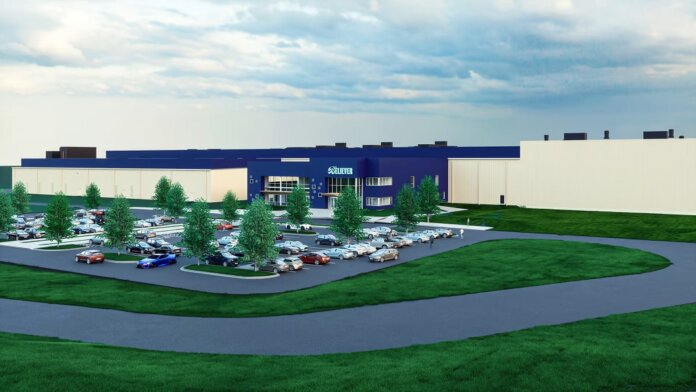Despite the fact that consumers have never tasted it and it’s only legal in Singapore, cultured meat is on a roll. Its production cost is dropping, multiple companies have entered the space, and the FDA recently granted its first approval to one of them. Last week the industry hit another milestone as an Israeli company broke ground on what it says will be the biggest cultured meat plant in the world.
The company was founded under the name Future Meat Technologies in 2018, but rebranded to Believer Meats last month. In 2021 they opened a facility to produce lab-grown meat at scale in Israel, and were aiming to secure FDA approval and start offering their products in US restaurants by the end of this year. That doesn’t seem to have happened, as the first FDA approval went to competitor Upside Foods.
But true to its name, Believer Meats hasn’t been deterred by this slower-than-anticipated series of events. Last week the company started construction of a 200,000-square-foot factory in Wilson, North Carolina, about 45 miles due east of Raleigh. In a press release the company stated, somewhat perplexingly, that it chose this location partly because of its “success in integrating technology-driven solutions to improve the lives of residents.”
With a production capacity of 10,000 metric tons, Believer says the facility will be the biggest of its type in the world. They’re putting $123 million into the plant, and say it will create more than 100 new jobs over the next three years. This huge investment seems like a bit of a leap of faith considering the company doesn’t have regulatory approval to produce and sell cultivated meat anywhere, including in the US; but co-founder Yaakov Nahmias says they’ve been working with the FDA towards gaining approval for years.
And Believer isn’t the only company taking such a leap of faith. Its competitor Good Meat is finalizing the location of a similarly large cultured meat plant in the US (which it also claims will be the biggest in the world), and aiming to start production by late 2024.
Despite the lagging approvals, cultured meat is starting to look more promising as a viable alternative to factory farming. That’s not to say the former will replace the latter anytime this decade (nor probably the next), but it’s getting off the ground.
Another encouraging aspect of the technology is the variety of meats that will seemingly be available once this stuff hits the market. The industry started with ground beef (food critics sampled the world’s first lab-grown burger in 2013, and it came at an estimated cost of $330,000), and has since expanded to chicken, pork, salmon, and steak.
Given the way cultured meat is made, there’s no reason why the above list can’t expand even more. Cells are extracted from an animal’s tissue (in a process that doesn’t harm the animal at all) and mixed with a cocktail of nutrients, oxygen, and moisture. Inside large bioreactors, the mixture is kept at the same temperature cells would be at in an animal’s body. The cells divide, multiply, and mature, with any waste products being removed to keep the environment pure.
You can just as easily take cells from a pig as from a cow, chicken, turkey, lamb, or fish (etc, etc). But growing the cells is the (relatively) easy part; the bioreactors don’t pop out ready-to-eat chicken breasts or racks of lamb. Replicating meat’s structure—that is, the tendons, muscle, fat, bone, and connective tissue that comes with it—is a complex process, and crucial to giving whole cuts of meat their distinctive texture and flavor. After the cells are “harvested” from the bioreactors they grew in, they need to be refined and shaped into a final product, which could involve extrusion cooking, molding, and even 3D printing.
Believer Meats hasn’t disclosed an anticipated completion date for the Wilson facility. But Nahmias, for his part, is optimistic. “While cultivated meat has its skeptics, we believe in demystifying the technology and critically demonstrating that there is a better way to produce meat through open science and innovation,” he said. “As the demand for meat continues to grow in coming decades, the current conventional meat industry won’t be able to meet the supply needed. That’s why we believe cultivated meat is needed to secure healthy, sustainable, and affordable nutrition for coming generations.”
Image Credit: Believer Meats



